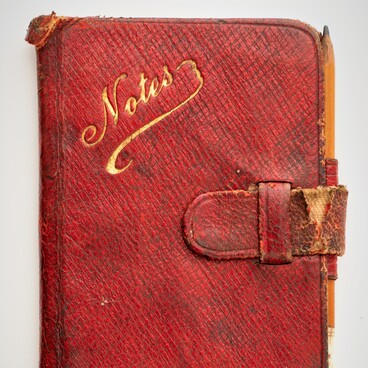The Sergiev Posad Museum-Reserve houses an intricately decorated curio cabinet. A curio cabinet was a small glass cabinet with doors, which was used for storing and displaying dishes. In it, the most valuable possessions, relics, objects of pride, for example, expensive silver utensils, were kept. The curio cabinet differed from dining buffets in that it had a larger glass enclosed area and did not have solid doors. In pre-revolutionary Russia, it was called a “gorka” (or a “hill” cabinet), as the dishes displayed in such cabinets were often stacked.
The cabinet from the museum collection was made by a Sergiev Posad cabinetmaker Dmitry Solovyov.
Initially, Dmitry Solovyov worked in the Lavra. He was considered a skilled cabinetmaker and made bespoke furniture. He owned two houses — 7a and 7/1 — on Vifanskaya Street. In one of them Solovyov lived with his family, a pub with a billiard room was located in the other. The owners themselves worked in it. This establishment was called “our Gambrinus”, by analogy with the Kuprin’s story “Gambrinus”, which takes place in a beer hall.
Kuprin himself also came to Sergiev Posad: he came to visit the Gorbachev brothers. The Solovyov’s beer hall was the first point on his way to the Chernigovsky skete. He visited “Gambrinus” with satirist and poet Sasha Chorny. But Solovyov was forced to close the beer hall, as it was believed that the pub was turning the workers of the Zaitsev silk-weaving factory into drunks: not only did they leave their wages there, but they also destabilized the production process. The second floor was added to the beer hall; thus, two residential buildings were established, in which mainly Solovyov’s family members lived. After the revolution, the Soviets nationalized private property and started a housing compaction campaign: the original owners could have only one room, and workers could be settled in the rest. Toymakers and former handicraftmen were among Solovyov’s new neighbors.
Dmitry Solovyov made the massive mahogany cabinet on the cusp of the 19th and 20th centuries. The “gorka” consists of a pedestal with hinged doors and a glass cabinet in the upper part. The doors and walls are decorated with bas-reliefs with mythical characters, many small decorative details and elegant carvings in the form of a floral ornament of leaves, bunches of grapes and fruits in the late Baroque style.
The cabinet from the museum collection was made by a Sergiev Posad cabinetmaker Dmitry Solovyov.
Initially, Dmitry Solovyov worked in the Lavra. He was considered a skilled cabinetmaker and made bespoke furniture. He owned two houses — 7a and 7/1 — on Vifanskaya Street. In one of them Solovyov lived with his family, a pub with a billiard room was located in the other. The owners themselves worked in it. This establishment was called “our Gambrinus”, by analogy with the Kuprin’s story “Gambrinus”, which takes place in a beer hall.
Kuprin himself also came to Sergiev Posad: he came to visit the Gorbachev brothers. The Solovyov’s beer hall was the first point on his way to the Chernigovsky skete. He visited “Gambrinus” with satirist and poet Sasha Chorny. But Solovyov was forced to close the beer hall, as it was believed that the pub was turning the workers of the Zaitsev silk-weaving factory into drunks: not only did they leave their wages there, but they also destabilized the production process. The second floor was added to the beer hall; thus, two residential buildings were established, in which mainly Solovyov’s family members lived. After the revolution, the Soviets nationalized private property and started a housing compaction campaign: the original owners could have only one room, and workers could be settled in the rest. Toymakers and former handicraftmen were among Solovyov’s new neighbors.
Dmitry Solovyov made the massive mahogany cabinet on the cusp of the 19th and 20th centuries. The “gorka” consists of a pedestal with hinged doors and a glass cabinet in the upper part. The doors and walls are decorated with bas-reliefs with mythical characters, many small decorative details and elegant carvings in the form of a floral ornament of leaves, bunches of grapes and fruits in the late Baroque style.



